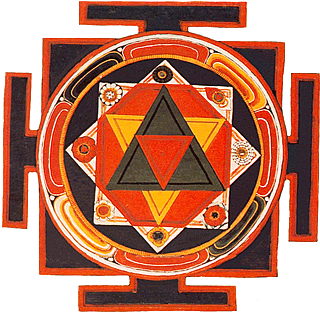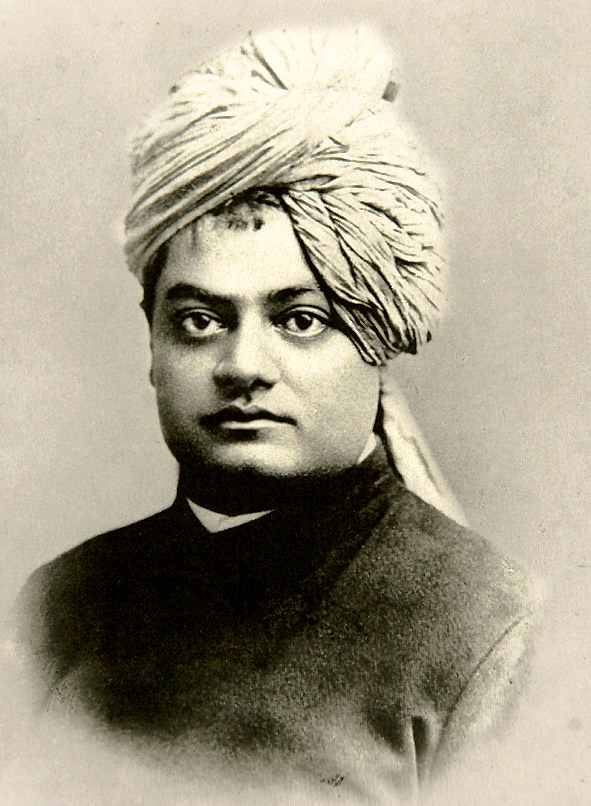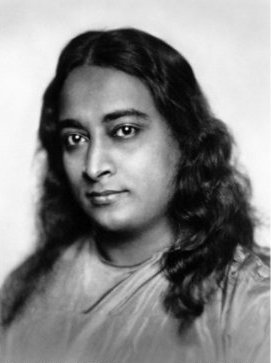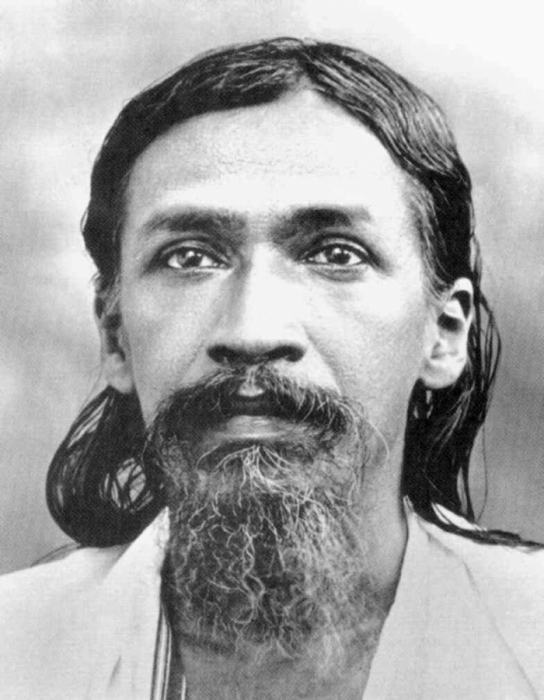
Yantra
Tantrism presents two paths known as dakshina marga (path of the right hand) and vama marga (path of the left hand). While the first of them focuses on inward practices and meditation, the main ritual of vama marga, panchamakara, is linked to the performance of five actions which usually are not recommended in other yoga systems, namely the intake of wine, meat, fish, toasted grain and ritual sex. The purpose of this is for the stored energy to awaken the coiled force kundalini which is asleep in the Muladhara chakra (an energy centre in the lower part of the spine). The physiology of chakras, nadis and kundalini is typical of the yoga systems that emerged in the Middle Ages and which were influenced by Tantrism. These include kundalini yoga, laya yoga, mantra yoga and hatha yoga which is popular today. It should be noted, however, that the system of chakras has its non-literal interpretations and applications just like panchamakara.

Posture of hatha yoga
During the Muslim rule in India bhakti movements became popular too. In the 16th century CE Chaitanya put new life into the cult of Krishna in Eastern India. Another famous Hindu saint of the time associated with bhakti yoga was Kabir who was respected by Muslims as well. The purpose of the teachings of Guru Nanak which became the basis of the unique synthesis of Hinduism and Islam, namely the Sikh religion, was similar.
Yoga in the Modern World
 Swami Vivekananda
Swami Vivekananda
Swami Vivekananda laid the foundations of modern yoga with his participation at the World Parliament of Religions in Chicago in 1893. At this forum Vivekananda had greatly impressed the American audience and provoked a strong increase in the interest in Indian spirituality on the part of the West. The success of Swami Vivekananda paved the way for other propagandists of the ancient doctrine and their flow has not abated to this day.
 Paramahansa Yogananda
Paramahansa Yogananda
Paramahansa Yogananda was a popular teacher in the early years of introducing the West to yoga. He arrived in Boston in 1920 and five years later founded in Los Angeles the society for self-awareness. His "Autobiography of a Yogi" had inspired thousands of followers around the world but had also helped spread some ideas of the teaching associated with the exercise of supernatural powers and miracles, which are not so correct and are not directly related to the object and purpose of yoga.

Sri Aurobindo Ghosh
One of the greatest philosophers of yoga, Sri Aurobindo Ghosh, created his works in the first half of the century. He grew up in an English family, studied in England and created an original philosophy called purna yoga (integral yoga) which explores yoga and Vedanta in the light of a peculiar evolutionary approach.